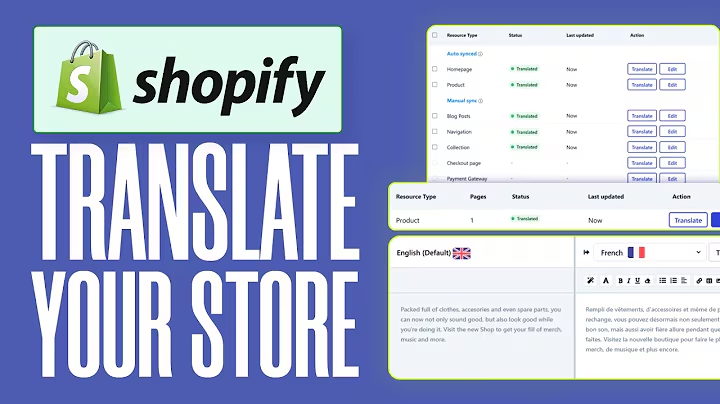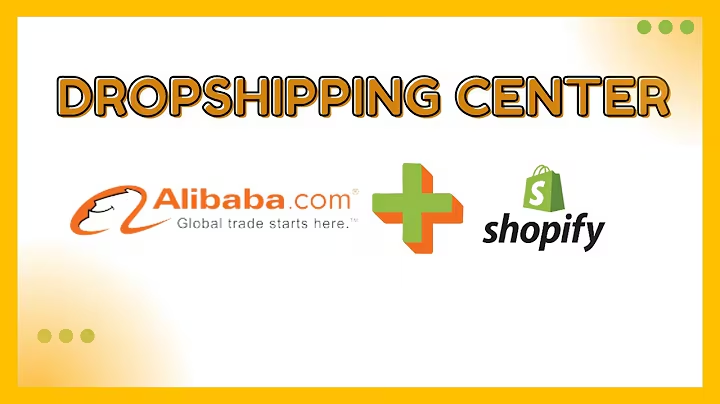Choosing the Best E-commerce Platform for Selling Art Online
Table of Contents:
- Introduction
- Choosing the Right E-commerce Platform
2.1 Researching Popular Artists
2.2 Polling the Audience
2.3 Reading Blogs and Reviews
- Shopify: The Big Behemoth
3.1 Pricing and Transaction Fees
3.2 Template Options
3.3 Additional Features and Apps
- Ecwid: Integrating with Existing Websites
4.1 Free Trial and Pricing
4.2 Plug-ins for WordPress and Wix
4.3 Variation and Business Plan
- Squarespace: Better for Portfolios than E-commerce
5.1 Pricing Comparison
5.2 Focus on Showcase and Artwork
- My Decision and Shop Demo
6.1 Link to Shopify Store
6.2 Review of Chosen Platform
- Conclusion
Setting Up an E-commerce Shop to Sell Artwork
Introduction:
Setting up an online shop to sell artwork can be a daunting process, especially with the multitude of e-commerce platforms available. In this article, we will explore the three main platforms: Shopify, Ecwid, and Squarespace. We will delve into the pros and cons of each platform, guiding you towards making an informed decision. By sharing my personal experience and research, I aim to simplify the process for you, so you can spend more time focusing on your creative artwork.
Choosing the Right E-commerce Platform:
Researching Popular Artists:
One effective way to determine which e-commerce platform suits your needs is by observing successful artists on platforms like Instagram. By analyzing their online shops, you can ascertain the e-commerce websites they use. However, keep in mind that established artists often opt for larger platforms such as Shopify due to their defined style, audience, and widespread following.
Polling the Audience:
Another approach is to engage your audience through Instagram polls or stories. While this method can provide insights, it is important to remember that customers typically prioritize the product itself rather than the e-commerce site. Nonetheless, considering your audience's preferences can give you a general idea.
Reading Blogs and Reviews:
Researching and reading blogs can be immensely helpful in understanding the nuances of each e-commerce website. One recommended blog provides comprehensive comparisons between different platforms, presenting relevant information to aid in decision making.
Shopify: The Big Behemoth:
Pricing and Transaction Fees:
Shopify is widely known as the leading e-commerce platform. With various paid plans, starting at $29 per month, Shopify offers a 14-day trial period. The price can be further reduced if you opt for an annual or multi-year subscription. However, it is important to note that Shopify charges a transaction fee of around 2.9% per item sold (fees may vary depending on the transaction type). While it may seem like an additional cost, this fee enables access to a wide range of payment options for your customers.
Template Options:
Shopify boasts an impressive selection of templates, allowing you to create a visually appealing and professional online shop. Even with the basic plan, free templates are available, eliminating the need for additional expenses. Navigating through the options is easy, and you can personalize your shop to suit your artistic style.
Additional Features and Apps:
If you desire additional features, Shopify offers an extensive library of apps that can be downloaded directly within the platform. These apps, developed by various companies, enable customization options such as product reviews, email flows, pop-ups, and cart abandonment reminders. While some apps are free, others require payment, adding another layer of considerations when using Shopify.
Ecwid: Integrating with Existing Websites:
Free Trial and Pricing:
Ecwid presents an interesting option if you already have an existing website, such as WordPress or Wix. With Ecwid, you can seamlessly integrate an e-commerce shop into your existing platform. The first ten products can be added for free, making it an ideal choice for those starting with a smaller inventory. Beyond that, pricing plans start at $19 or $30 per month, depending on your business needs.
Plug-ins for WordPress and Wix:
The convenience of Ecwid lies in its compatibility with various platforms. If your website is on WordPress, installing the Ecwid plug-in is effortless. It provides a cohesive user experience, ensuring that your shop is seamlessly integrated into your website. The same applies to other platforms such as Wix.
Variation and Business Plan:
One limitation of the Ecwid platform is that managing variations in products (such as different sizes for prints or t-shirts) requires a business plan upgrade. Without this upgrade, you will have to create separate listings for each variation. While the business plan costs around $30 per month, it does offer the advantage of not charging any transaction fees.
Squarespace: Better for Portfolios than E-commerce:
Pricing Comparison:
Squarespace is often regarded as a platform more suitable for portfolio showcasing rather than e-commerce. Comparing the pricing and features, it becomes evident that Shopify provides more value for your money.
Focus on Showcase and Artwork:
Artists who prioritize displaying their artwork and maintaining an aesthetic portfolio might choose Squarespace. However, for those seeking a platform dedicated to robust e-commerce capabilities, Squarespace may not offer the same level of customization and features as Shopify or Ecwid.
My Decision and Shop Demo:
Link to Shopify Store:
After thorough consideration and evaluating the features and pricing, I decided to go with Shopify for my online shop. If you're interested, you can explore my demo Shopify store by following the link provided in the description section.
Review of Chosen Platform:
Shopify offers the versatility I desired, and I appreciate the vast array of templates, allowing me to create an aesthetically pleasing and professional shop. Although additional features can be obtained through apps, it is important to evaluate whether these extras are necessary for your specific needs.
Conclusion:
Setting up an online shop for your artwork requires careful consideration of e-commerce platforms. By researching popular artists, polling your audience, and reading informative blogs, you can make a well-informed decision. In my personal experience, Shopify emerged as the leading contender due to its templates, features, and comprehensive payment options. However, it is important to weigh your specific requirements and budget before making a final decision. Remember, the purpose of choosing the right platform is to simplify the process and allow you to focus on your creative artwork.






















